Planet Earth Lesson Plan

Lesson Plan Mindmap for Planet Earth ” Click to Enlarge
CLICK ICONS TO JUMP DIRECTLY TO EACH SUBJECT ON THIS PAGE








PLANET EARTH LESSON PLAN
This page is a free-shared lesson plan archive for teaching all educational subjects within the context and theme of “Planet Earth”. It is purposed for use in community education environments, homeschool environments, traditional schooling environments, or as a supplemental and fun addition to any education program. As part of the complete Education for Life Program, this lesson plan is specifically designed to work in conjunction with the other components: Foundations of Teaching, Curriculum, Teaching Strategies, Learning Tools and Toys, Evaluation Model, and The Ultimate Classroom. If you’d like to learn how all these components work together, click here. Click here for the specifics focused on just using the lesson plans:
CLICK HERE FOR A DETAILED TUTORIAL ON HOW TO USE THIS LESSON PLAN
NOTE: The colors are provided as a possible linear progression (red/easiest to violet/most challenging) for people that might prefer a more linear structure. Our core philosophy, however, is that through creativity every color can be made easy or challenging for any learning level.
RELATED PAGES (mouse-over for descriptions and click for complete pages)
EDUCATION OVERVIEW | HOW TO USE THIS COMPONENT | OUR OPEN SOURCE PURPOSE

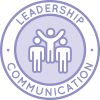
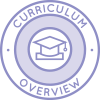
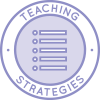
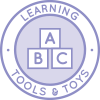
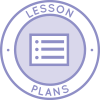
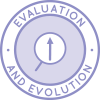
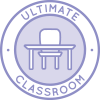
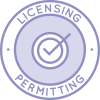

WAYS TO CONTRIBUTE TO EVOLVING THIS EDUCATION PROGRAM WITH US
SUGGESTIONS | CONSULTING | MEMBERSHIP | OTHER OPTIONS
A NOTE ABOUT ALL ONE COMMUNITY LESSON PLANS
The One Community lesson plans are intentionally designed for use in ANY educational environment and with ALL educational, cultural, religious/spiritual, and philosophical approaches to teaching and learning. They are designed without an ideological approach and specifically so they can be adapted to include the views, preferences, methodologies, and/or ideologies preferred by different parents and teachers.
For maximum flexibility and adaptation, they are also designed to be combined to teach multiple subjects at the same time. Doing this increases the creativity, effectiveness, and fun of your learning environment. Once we are on the property and operating our version of the complete school and Education for Life program, we will be adding video examples of how to combine the lessons. In the meantime, visit the Teaching Strategies page for a list of suggestions.
ARTS AND TRADES
CLICK HERE FOR THE COMPLETE SUBJECT OUTLINE FOR ARTS & TRADES
 | TEACHING ARTS AND TRADES WITHIN THE CONTEXT OF PLANET EARTH |

| The Arts- Use finger paints to create a picture* of our planet.
- Paper is made from precious trees. Learn how paper is recycled and make your own recycled paper*.
- Write your own lyrics* to celebrate Earth Day, using either your own music or music from an existing song.
- Create your own mosaic piece* of Earth, using beads, sticker tiles, ceramic tiles, etc.
- Design and create your own Earth-themed ceramic tile*.
- Bake and decorate a small loaf of bread or cake* using the theme of Earth as inspiration for its design.
- Create your own animation* or stop-motion art piece* about Earth Day.
- Create your own world-class piece of art* (stained glass, painting, carving, etc.) to celebrate Earth Day.
|

| Trades- Pick apples or another fruit or vegetable from your garden or a farm, with permission. Cut the fruit or vegetable and create a nice presentation* on a plate.
- Plant and grow organic tomatoes or another fruit or vegetable from seeds, preferably in an outdoor garden. Draw or take five pictures* to document stages of growth.
- Go into the forest and find a piece of wood that has fallen to the ground naturally. With adult supervision, carve that into your own piece of art*.
- Visit a blacksmith and learn how they use metals from Earth’s crust to make horseshoes and other items. Take pictures and create a photo journal* of your time with the blacksmith.
- Design your own zen garden or other type of garden*, focusing on using rocks and other natural materials found on Earth.
- Using designs from ancient Greece or another culture from antiquity as inspiration, create your own mosaic design* celebrating Earth.
- Create your own permaculture design, with 3D rendering*.
|
| CLICK HERE TO EMAIL US IF YOU HAVE AN IDEA TO ADD TO THIS SECTION |
* Please note that anything with an asterisk is just a suggestion. The diversity of options with asterisks are interchangeable and purposed to stimulate your own ideas. Any one of these suggestions could be replaced with a written paper, any form of art project (drawing, painting, music, paper mache, clay, wood, knitting/embroidery, metals, etc. etc.), an experiment, a presentation, a mindmap, a computer program, a web design project, a piece of poetry or a song, an interpretive dance or play, a group project, or anything else. What we feel is most important is that both the Learner and the Teacher agree on an exercise/activity they both feel would be maximally engaging, fun, and effective. If you come up with an idea we haven’t already thought of, please share it with us.
ENGLISH
CLICK HERE FOR THE COMPLETE SUBJECT OUTLINE FOR ENGLISH
Note: Any language can be substituted for English. The subject is listed here as “English” because that is the primary language of most of the people on the team, and the official language of the country we’re building our initial location in.
 | TEACHING ENGLISH WITHIN THE CONTEXT OF PLANET EARTH |

| - With a strong reader, look at and read a book, article, or piece of text about the planet Earth. Discuss three questions* a person could ask about Earth that is answered in the text.
- Compose a short chronology* of the planet Earth (natural events).
- Read a piece of text about the planet Earth written for your reading level. Then make up three questions a person could ask about Earth that is answered in the text, and write down* both the questions and the answers.
- Choose two texts about planet Earth, one written in US English and one written in British English. Create a list of words that are spelled or used differently between the texts and try to find patterns in these differences. Write a short report* of your findings, properly citing the Internet and other resources used as references.
- Watch an episode of a documentary about planet earth such as the BBC documentary series “Planet Earth”, and compose a quantity and quality centered analysis and evaluation* of the episode as a form of media communication.
- Read an academic article about planet Earth and note the differences in word usage, language, tone, and style. Paraphrase the article (1) using your regular writing style for school, etc. and (2) as if you were explaining the article to a friend. Create a report* documenting the original text, your new texts, and your rationale and reflections.
- Write and open source publish an essay* about political discourse around planet Earth and climate change, including political speeches and their use of persuasive argumentation.
|
| CLICK HERE TO EMAIL US IF YOU HAVE AN IDEA TO ADD TO THIS SECTION |
* Please note that anything with an asterisk is just a suggestion. The diversity of options with asterisks are interchangeable and purposed to stimulate your own ideas. Any one of these suggestions could be replaced with a written paper, any form of art project (drawing, painting, music, paper mache, clay, wood, knitting/embroidery, metals, etc. etc.), an experiment, a presentation, a mindmap, a computer program, a web design project, a piece of poetry or a song, an interpretive dance or play, a group project, or anything else. What we feel is most important is that both the Learner and the Teacher agree on an exercise/activity they both feel would be maximally engaging, fun, and effective. If you come up with an idea we haven’t already thought of, please share it with us.
HEALTH
CLICK HERE FOR THE COMPLETE SUBJECT OUTLINE FOR HEALTH
 | TEACHING HEALTH WITHIN THE CONTEXT OF PLANET EARTH |

| - Draw a picture* to show why it is spiritually and emotionally healthy to connect with planet Earth (e.g. a picture of how you feel when out in nature).
- Create a mindmap* of ways to physically exercise via nature and the outdoors.
- Write at least one paragraph* about each of the following: our connection (e.g. physical, spiritual) to Earth, our connection to the animals on the planet, and our connection to plants on the planet.
- Go on an outdoor adventure (e.g. orienteering, scuba diving) and write a short, reflective piece* about your physical, mental, and spiritual health during this exercise.
- Using planet Earth as a springboard for thinking, write an essay* about your values and beliefs, living your life in line with these and what the meaning of life is to you.
- Present a well-researched report on the internet* about qualitative ways to help us manage “undesired” feelings (e.g. anger), thoughts, and stress.
- Write a well-researched essay* about some forms of spiritual or spiritual physical practices which are usually or sometimes done outside (e.g. tai chi, yoga, walking meditation, sweat lodge), explaining why these practices are done outside or otherwise in connection with Earth. Choose one to experiment with, and document your experience within your essay.
|
| CLICK HERE TO EMAIL US IF YOU HAVE AN IDEA TO ADD TO THIS SECTION |
* Please note that anything with an asterisk is just a suggestion. The diversity of options with asterisks are interchangeable and purposed to stimulate your own ideas. Any one of these suggestions could be replaced with a written paper, any form of art project (drawing, painting, music, paper mache, clay, wood, knitting/embroidery, metals, etc. etc.), an experiment, a presentation, a mindmap, a computer program, a web design project, a piece of poetry or a song, an interpretive dance or play, a group project, or anything else. What we feel is most important is that both the Learner and the Teacher agree on an exercise/activity they both feel would be maximally engaging, fun, and effective. If you come up with an idea we haven’t already thought of, please share it with us.
MATH
CLICK HERE FOR THE COMPLETE SUBJECT OUTLINE FOR MATH
 | TEACHING MATH WITHIN THE CONTEXT OF PLANET EARTH |

| - Draw a picture of the earth and name* its mathematically related qualities, such as its shape, and count the quantities of major features, such as continents and oceans.
- Learn\how much time it takes for the Earth to complete (i) one rotation and (ii) one orbit around the Sun? Record* your results and 5 ways these quantities could be used.
- What are the mean measurements of the Earth (e.g. radius, circumference)? Illustrate* these with a diagram and explain how mean measurements are calculated.
- Determine what percentage* of the Earth’s surface is covered by land, by water, by each continent, etc. Show your work.
- Using a spreadsheet or other software, create a table and chart* to illustrate how tall the 10 tallest mountains on Earth are.
- Using a spreadsheet or other software, create a table and chart to illustrate how long the 10 longest rivers on Earth are.
- Find out what latitude and longitude are. Then choose 15 cities in different countries and find out what their latitudes and longitudes are. Then figure out the distance between 15 pairs of these cities. Design a representation* of your results.
- Choose one city in each of the time zones (on Earth, not just in your country). Imagine you have friends in each of those cities and will be telephoning them at New Year’s Day 2016 (01 Jan 2016) at midnight, their time. What time would it be in your city when you called each of them? What time would they have to call you in their time zones in order to reach you at midnight in your city? (Note: Daylight savings time exists in some time zones but not others). Make a chart* of this.
- In a videotaped presentation*, explain Nasa’s map of the Earth’s ocean salinity (http://www.dailymail.co.uk/sciencetech/article-2042116/Nasa-unveils-map-salt-levels-seas-world-transform-understanding-weather.html). What do measurements such as parts per thousand and grams per kilograms mean? Then find out the salinity of the ten most salty bodies of water on Earth and explain why people can float in certain water bodies better than in others.
- Research how the Richter Scale and seismographs work (for detecting Earthquake intensity). Using real-life data, in a visual presentation* show twenty different recent historical events, including their Earthquake intensity using the Richter Scale. Include the required formula and how the calculations were done.
|
| CLICK HERE TO EMAIL US IF YOU HAVE AN IDEA TO ADD TO THIS SECTION |
* Please note that anything with an asterisk is just a suggestion. The diversity of options with asterisks are interchangeable and purposed to stimulate your own ideas. Any one of these suggestions could be replaced with a written paper, any form of art project (drawing, painting, music, paper mache, clay, wood, knitting/embroidery, metals, etc. etc.), an experiment, a presentation, a mindmap, a computer program, a web design project, a piece of poetry or a song, an interpretive dance or play, a group project, or anything else. What we feel is most important is that both the Learner and the Teacher agree on an exercise/activity they both feel would be maximally engaging, fun, and effective. If you come up with an idea we haven’t already thought of, please share it with us.
SCIENCE
CLICK HERE FOR THE COMPLETE SUBJECT OUTLINE FOR SCIENCE
 | TEACHING SCIENCE WITHIN THE CONTEXT OF PLANET EARTH |

| Life Sciences- What is the most numerically abundant animal on this planet? Print out a picture of it and create a label* to show its name (and maybe some information).
- What is the most numerically abundant plant on this planet? Print out a picture of it and create a label* to show its name (and maybe some information).
- What are the ten oldest plants on Earth, by species? Create a visual display*.
- What are the ten oldest animals on Earth, by species? Create a visual display*.
- Research endangered animals and choose one to focus on. Create a presentation* about the animal, why it is endangered, its current population, what can be done to help this animal, and what is already being done.
- Bees are important to planet Earth and our lives. Write a well-researched essay* about the state of bees, current threats, the importance of bees to the Earth and humans, and what can be done to help increase the bee population. Include photos and statistics.
- Trees are important to planet Earth and our lives. Write a well-researched essay* about the state of trees, deforestation, the importance of trees to the Earth and humans, and what can be done to help increase the tree population. Include photos and statistics.
- What is biodiversity? Write a well-researched essay*, including how to increase biodiversity. Use at least five different examples from various continents to illustrate your points.
- Research the mechanisms that allow one specific animal/plant or group of animals/plants to live in extreme weather conditions on Earth. Write a well-researched essay*.
- Create a lesson plan* for high-school students about the Great Barrier Reef and the environment.
- Create a lesson plan* for high-school students about the Amazon Rainforest and the environment.
|

| Physical Sciences- Which ocean is the saltiest? Where is this ocean located on a map of the Earth? Show the location on by drawing* a map and marking that ocean.
- What are the hardest and softest minerals that have been found on Earth? Can you locate any of these in your home? Make a list* of what you find.
- What is the theoretical chemical composition of different layers of the Earth (core, mantle, crust)? Make a picture* showing this.
- Explain why temperature and air pressure change as you go up a mountain. Choose one specific mountain to illustrate*, indicating at least 5 points at different altitudes and their associated, real-life data (height, temperature, air pressure).
- Explain why temperature and air pressure change as you go deeper into an ocean. Choose one specific place in the ocean and use real-life data; indicate at least 5 points at different altitudes and their associated data (height, temperature, air pressure). Create a chart* of your findings in a chart.
- What is ozone? What is the ozone layer? Create a well-researched presentation*, explaining how the ozone layer functions, what has happened to it, and how this has impacted it functionality.
- How is pH level determined? Create a well-researched presentation* about pH levels along with changes to pH levels within the Earth’s water system and cycle.
- What is the chemical composition of the Earth’s atmosphere? What challenges have been caused by changes to this chemical composition by human activity? Write a well-researched report*, including potential solutions or alternatives.
- Write and open source publish a well-researched paper* about whether the Earth’s core is solid, liquid, hollow, or something else.
|

| Earth Sciences- What is the world’s largest desert? Where is it located? Find or create a map of the world and pinpoint* the location.
- Create a poster presentation* about your favorite volcano, including information about magma, etc.
- Create a poster presentation* about your favorite river, indicating where the water originates from and how water is important to the ecosystems and/or humans around the river.
- Explain the connection between earthquakes and tsunamis.
- Explain the origins of tornadoes.
- Explain desertification, including its causes and effects.
- Write a well-researched presentation* about where natural gas comes from and the practices used to obtain natural gas, including hydraulic fracking. How does this affect the planet?
- Write a well-researched presentation* about where petroleum comes from and the practices used to obtain it. How do these practices affect the planet?
- Write a well-researched presentation* about where petroleum comes from and the practices used to obtain it. How do these practices affect the planet? Also research potential solutions and/or come up with your own innovative solution to be included as part of the presentation.
- Choose one type of mining and write a well-researched report*. Include information about the minerals mined for, environmental impact, and alternatives.
- Write a well-researched essay* about factors which warm the Earth, including El Niño, solar activity, and human activity. Explain how each factor works and explain your point of view.
|
| CLICK HERE TO EMAIL US IF YOU HAVE AN IDEA TO ADD TO THIS SECTION |
* Please note that anything with an asterisk is just a suggestion. The diversity of options with asterisks are interchangeable and purposed to stimulate your own ideas. Any one of these suggestions could be replaced with a written paper, any form of art project (drawing, painting, music, paper mache, clay, wood, knitting/embroidery, metals, etc. etc.), an experiment, a presentation, a mindmap, a computer program, a web design project, a piece of poetry or a song, an interpretive dance or play, a group project, or anything else. What we feel is most important is that both the Learner and the Teacher agree on an exercise/activity they both feel would be maximally engaging, fun, and effective. If you come up with an idea we haven’t already thought of, please share it with us.
SOCIAL SCIENCES
CLICK HERE FOR THE COMPLETE SUBJECT OUTLINE FOR SOCIAL SCIENCES
 | TEACHING SOCIAL SCIENCES WITHIN THE CONTEXT OF PLANET EARTH |

| - Using a copy of the world map, circle your current location. Make a note* of 6 places you have been or would like to go (3 close to you, 3 far away). Imagine what it would be like to go there.
- Locate a map showing the relief of your area or country (relief map). Learn how to read it, and indicate where you are at the moment. Write a paragraph* about some features, such as hills.
- Create a one-sheet document* showing a map of the world, indicating whether people in each country drive on the right side of the road or the left. Then in the same document, write half a page about the history behind these differences.
- Choose at least one culture on each continent, and write a report* about the major cultural myths associated with that culture. Are there any similarities or differences between the different cultures?
- Write a well-researched essay* about the features of the Arctic and Antarctic regions, including the effects of planetary warming happening on Earth and throughout our solar system.
- Write a well-researched essay* about some of the most significant recorded historical events on each of the continents.
- Write a well-researched essay* about some of the most important current events for each of the continents. Try to use alternative news sources and local news sources if available (e.g. read about an issue in India in an Indian newspaper, not CNN). Include reflections on how events that are happening around the world affect you and your family, if at all.
- Write a well-researched essay* about the history of colonialism and imperialism and how it has affected each of the continents. Use this as a springboard to discuss past issues of racial oppression, economic inequality, neo-colonialism, and other pressing issues.
|

| Foreign Languages
(Each of the following is to be completed in the foreign language(s) being studied)- Learn the names of all the continents on Earth.
- Label a map* of the world using the names of the continents and oceans.
- Read a book about Planet Earth written for your reading level.
- Compose a skit or short play* about traveling to different continents.
- Write a short paragraph* that introduces each of the continents with at least one thing you find interesting about each one.
- Read a book about Planet Earth or one aspect of the planet (e.g. ecology, history, current events) written for your level of reading and write a book report*.
- Read two different books about one aspect of Planet Earth/human history (e.g. geography, history, geology, environment, law, culture). Write a review article* comparing and contrasting the two books.
|
| CLICK HERE TO EMAIL US IF YOU HAVE AN IDEA TO ADD TO THIS SECTION |
* Please note that anything with an asterisk is just a suggestion. The diversity of options with asterisks are interchangeable and purposed to stimulate your own ideas. Any one of these suggestions could be replaced with a written paper, any form of art project (drawing, painting, music, paper mache, clay, wood, knitting/embroidery, metals, etc. etc.), an experiment, a presentation, a mindmap, a computer program, a web design project, a piece of poetry or a song, an interpretive dance or play, a group project, or anything else. What we feel is most important is that both the Learner and the Teacher agree on an exercise/activity they both feel would be maximally engaging, fun, and effective. If you come up with an idea we haven’t already thought of, please share it with us.
TECHNOLOGY AND INNOVATION
CLICK HERE FOR THE COMPLETE SUBJECT OUTLINE FOR TECHNOLOGY AND INNOVATION
 | TEACHING TECHNOLOGY & INNOVATION WITHIN THE CONTEXT OF PLANET EARTH |

| Technology- You can telephone all over the world since each country has its own telephone code. Choose one country on each continent and find out its country code (e.g. Benin’s is +229). Make a map* of 10+ different country telephone codes.
- There are so many websites now that many countries are now using TLD (Top-Level Domain) names other than “.com” ” like their own internet country code top-level domain. Choose at least one country on each continent, and find out its internet country code top-level domain (e.g. .com.ar for Argentina). Create a list* of these codes.
- Research and write a list of some rules* of online etiquette, listing at least 10 items that are related to intercultural communication online.
- Learn how Google Maps, Mapquest, and other similar websites work. What different types of information and software are needed for these websites to provide their services? Write an informative blog* about this.
- Imagine you had to use social media to reach people in various parts of the world as part of a global social/environmental movement. Write a plan* of how you would do this and experiment with using different tools.
- Compare and contrast the waste management and recycling system of at least one country from each continent. Write a report*.
- Write a well-researched essay* about one type of transport system or multiple types that connect various continents on the planet together. What alternative transportation did various peoples use before your type(s) of transportation were developed.
- Create a workshop* on how the mass distribution of written communication has affected the world ” use examples from different parts of the world. This includes the printing press, faxing, emailing, and others. Lead a roundtable discussion* with participants about future possibilities of sharing written communication globally.
|

| Innovation- Choose one picture from each continent and imagine traveling there. Make a collage* of what would it be like.
- Create a larger picture using mosaics* of different pictures from different continents (i.e. photomosaic). Reflect on the end result and what it expresses about planet earth.
- What would you say is part of your identity, values, and belief system? Do some research online to see if your identity construct is related to your location and culture. Write a list* of at least 10 words to represent this.
- Create a vision board* of what you would like for planet earth’s future (people, animals, environment, technology, etc.).
- Investigate various types of art, music, and creativity systems in various countries/areas around the world. Create a presentation*.
- Write a well-researched essay about various literary classics around the world (at least one from each continent).
- Write and open source publish on the internet a well-researched essay*. Start with researching one world-change organization or more (e.g. Friends of the Earth). Then use this a springboard to reflect on how you can make the world a better place.
|
| CLICK HERE TO EMAIL US IF YOU HAVE AN IDEA TO ADD TO THIS SECTION |
* Please note that anything with an asterisk is just a suggestion. The diversity of options with asterisks are interchangeable and purposed to stimulate your own ideas. Any one of these suggestions could be replaced with a written paper, any form of art project (drawing, painting, music, paper mache, clay, wood, knitting/embroidery, metals, etc. etc.), an experiment, a presentation, a mindmap, a computer program, a web design project, a piece of poetry or a song, an interpretive dance or play, a group project, or anything else. What we feel is most important is that both the Learner and the Teacher agree on an exercise/activity they both feel would be maximally engaging, fun, and effective. If you come up with an idea we haven’t already thought of, please share it with us.
VALUES
CLICK HERE FOR THE COMPLETE SUBJECT OUTLINE FOR VALUES
 | TEACHING VALUES WITHIN THE CONTEXT OF PLANET EARTH |

| - Discuss* with 3 others about if you had visitors that did not speak your language staying at your home. What games would you play with these children? How would you share your toys and other items?
- Imagine you were staying with a family in another country with another culture. What would you want them to do to make you feel comfortable? What would you do to show that you respect their country and culture? Make a picture representation* of this.
- Using library or internet resources, do some research about what ‘privacy’ means to different people around the world. Write a paragraph* comparing and contrasting some of these meanings.
- Imagine if you had to collaborate on a team made of members from all over the world. Write a short story* illustrating the use of various best practices in intercultural communications.
- Write a reflective piece* on everything Planet Earth has given to you, your experience on Earth and how you plan on giving back to Planet Earth and other beings on the planet.
- Write an essay* about how you would explore various regions of the Earth with integrity and concern for humanity and the planet.
- Write and publish a how to guide* about different methods for staying grounded to Planet Earth that are used around the world.
|
| CLICK HERE TO EMAIL US IF YOU HAVE AN IDEA TO ADD TO THIS SECTION |
* Please note that anything with an asterisk is just a suggestion. The diversity of options with asterisks are interchangeable and purposed to stimulate your own ideas. Any one of these suggestions could be replaced with a written paper, any form of art project (drawing, painting, music, paper mache, clay, wood, knitting/embroidery, metals, etc. etc.), an experiment, a presentation, a mindmap, a computer program, a web design project, a piece of poetry or a song, an interpretive dance or play, a group project, or anything else. What we feel is most important is that both the Learner and the Teacher agree on an exercise/activity they both feel would be maximally engaging, fun, and effective. If you come up with an idea we haven’t already thought of, please share it with us.

OTHER RESOURCES
We're building a resource section. Click here if you have a suggestion or resource for this page.
OPEN SOURCE SUBJECT RESOURCES (click icons for complete pages)



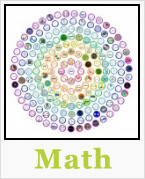



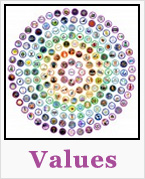
OPEN SOURCE CURRICULUM OUTLINES (click image for summaries and links to complete pages)
CARE
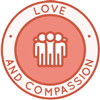
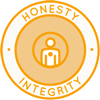
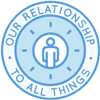
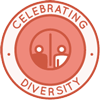
SHARE
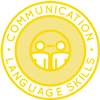
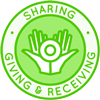

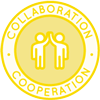
PLAY
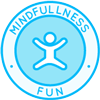
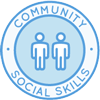
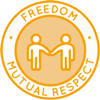
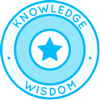
OPEN SOURCE TEACHING METHODOLOGY SUMMARIES
Montessori | Waldorf | Orff | Reggio | Multi-Intelligence | Bloom's Taxonomy | Study Tech | I-WE
INDEX OF ALL THE ONE COMMUNITY OPEN SOURCE LESSON PLANS

Click this image for the Lesson Plans for Life page with links to the rest of the lesson plans
THE WORLD'S LARGEST ONLINE FREE EDUCATION RESOURCE ARCHIVE
RELATED CONTENT AND OTHER RELATED RESOURCES
We're building this resource section. Click here if you have a suggestion or resource for this page.

























 One Community
One Community




